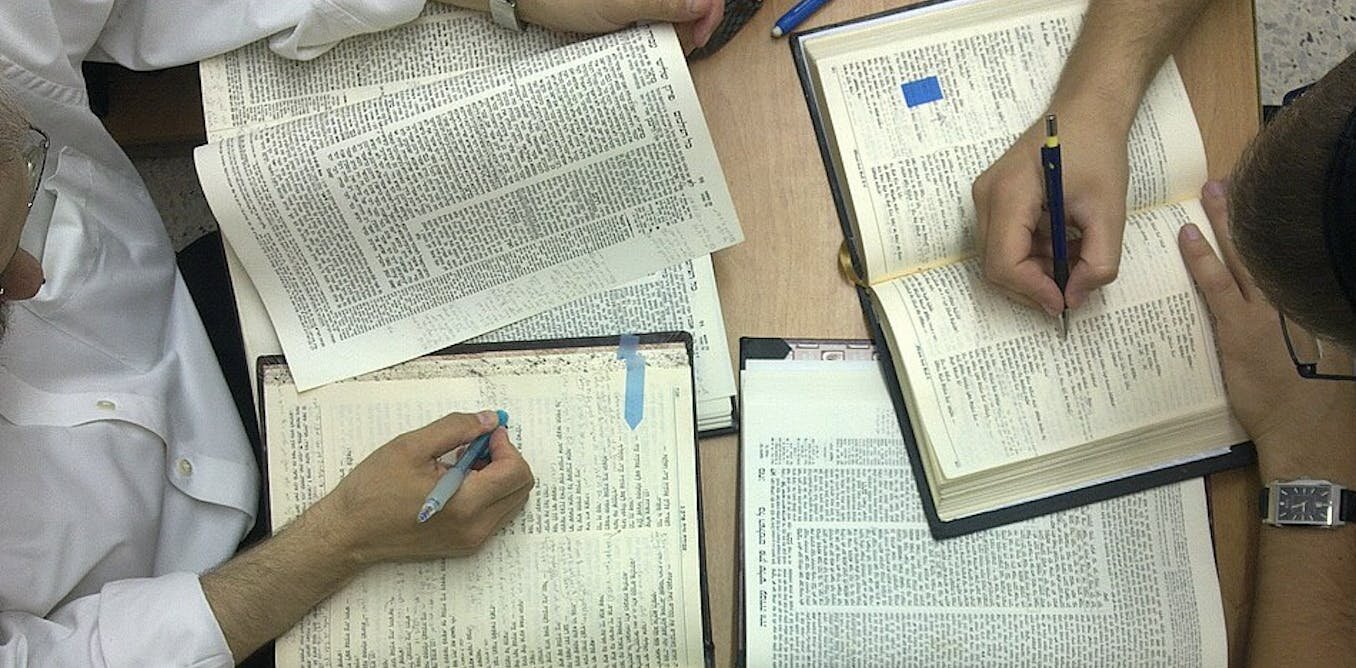“Genderqueer” and “nonbinary” are modern terms used to describe individuals who don’t fit into traditional male or female categories. However, the recognition of gender diversity goes back much further than we may realize. As a scholar specializing in Judaism and gender, I often find that people assume religion is inherently conservative and resistant to change when it comes to sex and gender. The prevailing belief is that religions have always embraced a binary understanding of gender, with only men and women. But the reality, as evidenced by the history of Judaism and many other religious traditions, tells a different story.
Traditional Jewish sources do discuss the categories of “man” and “woman,” but these are not the only designations used for sex and gender in rabbinic texts. Rabbinic literature, a collection of ancient texts written by Jewish leaders, includes several additional categories. For example, a person with both sets of external genitalia is referred to as an “androgynos,” a term borrowed from Greek. A person with neither is called a “tumtum,” and a person who loses their male sexual organs is called a “saris.” There is also a term for someone assigned female at birth who does not develop female sexual characteristics and may develop “male” traits: an “aylonit.”
One interesting interpretation can be found in Genesis Rabbah, a collection of biblical interpretations from late antiquity. It offers an alternative explanation of the creation story in Genesis, which includes the famous phrase “Male and female He created them.” While many readers interpret this to mean God created a man and a woman, some rabbis quoted in Genesis Rabbah believed that God created an androgynos. One rabbi explained, “In the hour when the Holy One Blessed Be He created the first human, He created an androgynos, as it is written, ‘male and female He created them.'” Another rabbi in the same text argued that God initially created a human with both male and female attributes, only later separating them. These interpretations, although varying in specific details, place an androgynos at the center of God’s creation.
Jewish law, or halakhah, operates within a gender binary framework. Certain commandments apply exclusively to men or women. However, there are halakhic traditions that recognize the existence of individuals whose bodies do not fit into this binary. The Mishnah, a text compiled in the third century C.E., provides interpretations rooted in the categories of men and women while acknowledging that sex and gender extend beyond these terms. For instance, Mishnah Bikkurim states, “There are some ways the androgynos is like men, and some ways he is like women, and some ways he is like men and women, and some ways he is like neither men nor women.” The Mishnah also explains that neither a tumtum nor an androgynos, like women, is obligated to attend certain religious festivals in the Jerusalem Temple. Additionally, an androgynos is required to dress like a man, and a priest cannot marry an aylonit unless he already has children. These examples demonstrate that gender diversity is present in rabbinic traditions, although a hierarchy persists, with men occupying positions of higher religious obligation.
It is crucial to recognize that these categories differ from contemporary understandings of gender. The experiences of nonbinary individuals in the 21st century are not equivalent to those of tumtums in late antiquity. The concept of “aylonit” does not align neatly with any commonly recognized gender identity today. Even the term “androgynos” is distinct from intersex. None of the rabbinic categories directly correlate with current notions of transgender identity.
Despite this textual tradition, many observant Jewish communities today still adhere to a binary understanding of gender. In Orthodox synagogues, for example, a physical partition separates the worship space into separate sections for men and women. Halakhic rulings regarding medical interventions on intersex children often dictate that they should be raised as either male or female, rather than as androgynous or tumtum. However, in other Jewish communal spaces, traditional texts have become a resource for LGBTQ+ individuals to affirm their belief that Judaism recognizes gender diversity as a spectrum. Some use these texts to find themselves within Jewish tradition, while others employ them to challenge anti-LGBTQ+ positions. These Jews acknowledge that the gender diversity depicted in ancient texts differs from contemporary gender identities but believe that the past can inform and empower the present.
Rabbinic texts illustrate that there was never a time in the past when every individual easily fit into gender categories. The diverse understanding of sex and gender in these ancient texts challenges the assumption that religious traditions have always adhered to a rigid binary understanding of gender.
Denial of responsibility! TechCodex is an automatic aggregator of the all world’s media. In each content, the hyperlink to the primary source is specified. All trademarks belong to their rightful owners, and all materials to their authors. For any complaint, please reach us at – [email protected]. We will take necessary action within 24 hours.

Jessica Irvine is a tech enthusiast specializing in gadgets. From smart home devices to cutting-edge electronics, Jessica explores the world of consumer tech, offering readers comprehensive reviews, hands-on experiences, and expert insights into the coolest and most innovative gadgets on the market.


